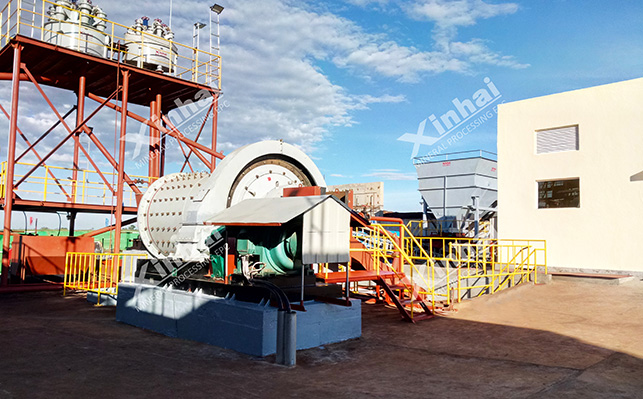Reasonable selection of nickel ore ball mill can improve grinding efficiency, improve ore recovery rate and concentrate grade. Moreover, reasonable ball mill selection and configuration can significantly improve production efficiency and reduce energy consumption. So how to choose a nickel ore ball mill?
(1) Ore characteristics
The physical and chemical properties of the ore affect the selection of the ball mill, especially the hardness, particle size and density of the ore. The Mohs hardness of nickel ore is 4, which is a relatively hard metal. Therefore, when choosing a ball mill, you should try to choose a ball mill with a long barrel length and a longer grinding time, or an overflow ball mill without a forced discharge mechanism.
(2) Processing capacity
According to production needs, determining the processing capacity of the ball mill is a key step in the selection. Processing capacity is usually expressed in terms of processing volume per hour or per day. A small nickel ore concentrator may only need to process tens of tons of ore, while a large nickel ore concentrator may need to process thousands of tons.
(3) Grinding fineness
Grinding fineness refers to the particle size of the ore after grinding, usually expressed as the percentage of ore particles passing through a certain sieve size in the total ore volume. The pass rate of -0.074mm is a common grinding fineness indicator. A nickel ore dressing plant increased the recovery rate from the original 60% to 75% by optimizing the grinding fineness. This shows the importance of grinding fineness for ball mill selection.

(4) Grinding media
The selection of grinding media has a significant impact on grinding effect and energy consumption. Commonly used grinding media include steel balls and steel rods. Steel balls are suitable for fine grinding and can provide uniform grinding effect; steel rods are suitable for coarse grinding and can improve grinding efficiency. Selecting the appropriate grinding media size and ratio can optimize the grinding effect and reduce energy consumption.
(5) Liner type
The type and material selection of the liner are also very important. High manganese steel liner has good wear resistance and is suitable for ores with higher hardness; rubber liner has good corrosion resistance and shock absorption and is suitable for acidic or alkaline slurry. According to the characteristics of the ore and the requirements of the beneficiation process, selecting the appropriate liner type can extend the service life of the equipment and improve production efficiency.
(1) Single ball mill configuration
For small nickel ore concentrators, single ball mill configuration is a common choice. This configuration is simple, with low investment cost, and is suitable for nickel ore concentrators with small processing capacity. The key points of single ball mill configuration include selecting appropriate processing capacity and grinding fineness to ensure that the equipment can meet production needs.
(2) Multiple ball mill configuration
For large nickel ore concentrators, multiple ball mill configuration should be selected to help improve production efficiency and stability. Multiple ball mills can be configured in series or parallel. Series configuration can achieve multi-stage grinding and improve grinding effect; parallel configuration can improve processing capacity and ensure the continuity of the production process.
(3) Closed-circuit grinding system
The closed-circuit grinding system is a key configuration to improve grinding efficiency and stability. In the closed-circuit grinding system, the slurry after grinding is classified by the classification equipment, the coarse particle size returns to the ball mill for further grinding, and the fine particle size enters the next process. This configuration can ensure that the ore reaches the required grinding fineness and improve the grinding efficiency. Commonly used classification equipment includes spiral classifiers and hydrocyclones. Selecting appropriate classification equipment and optimizing classification parameters can further improve the performance of the closed-circuit grinding system.
(4) Automated control system
Ball mills with automated control systems are widely used in nickel ore dressing plants. Modern ball mills are usually equipped with PLC control systems to achieve automatic control and monitoring of the equipment. Through online monitoring equipment, various parameters in the grinding process, such as slurry concentration, grinding fineness, motor current, etc., can be monitored in real time, and equipment operating parameters can be adjusted in time to ensure the grinding effect. For example, by monitoring the motor current, the filling rate of the grinding medium can be determined, and the grinding medium can be replenished in time to keep the equipment in good operating condition.